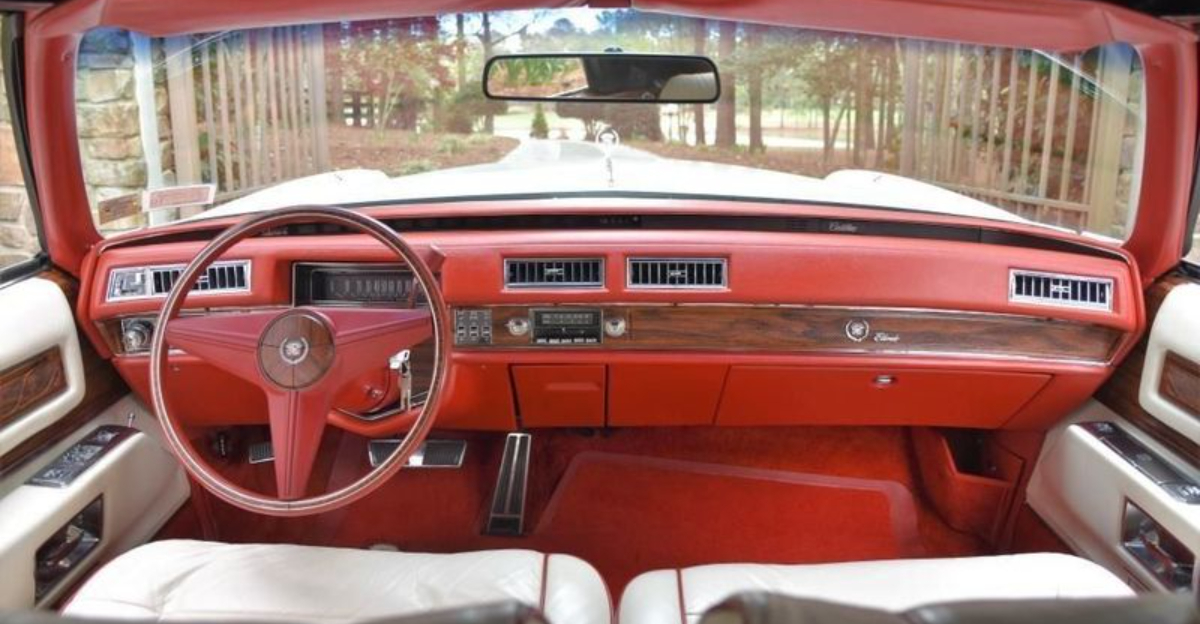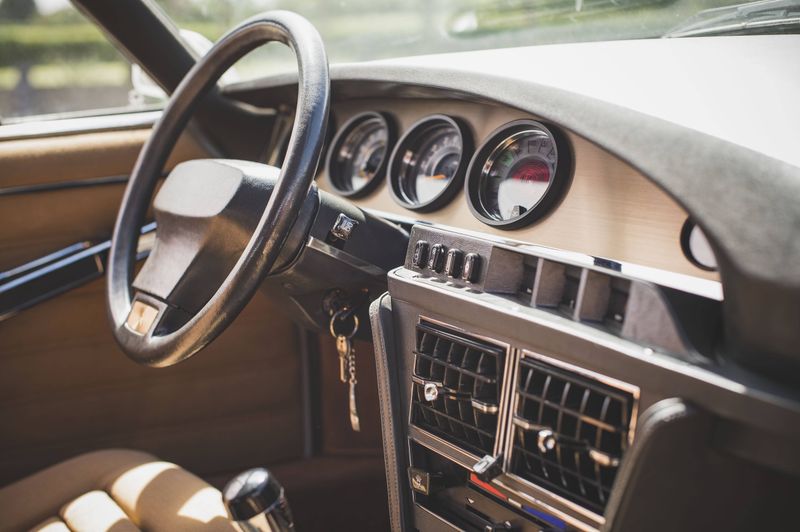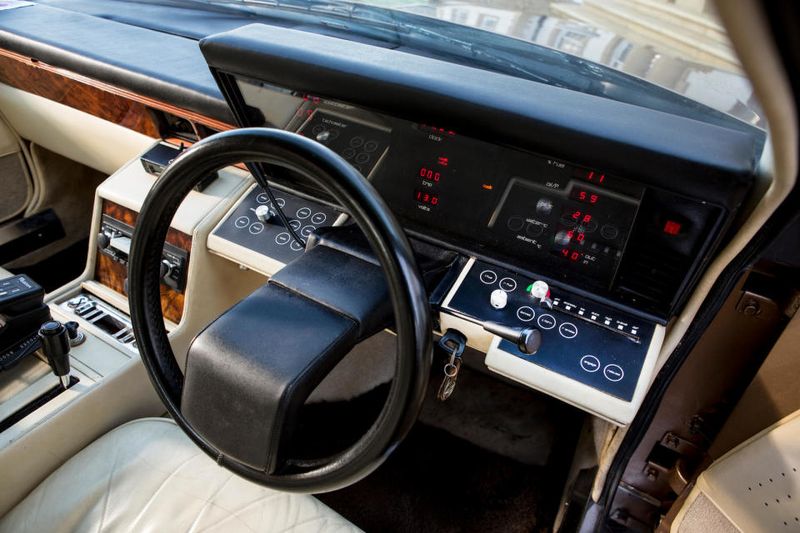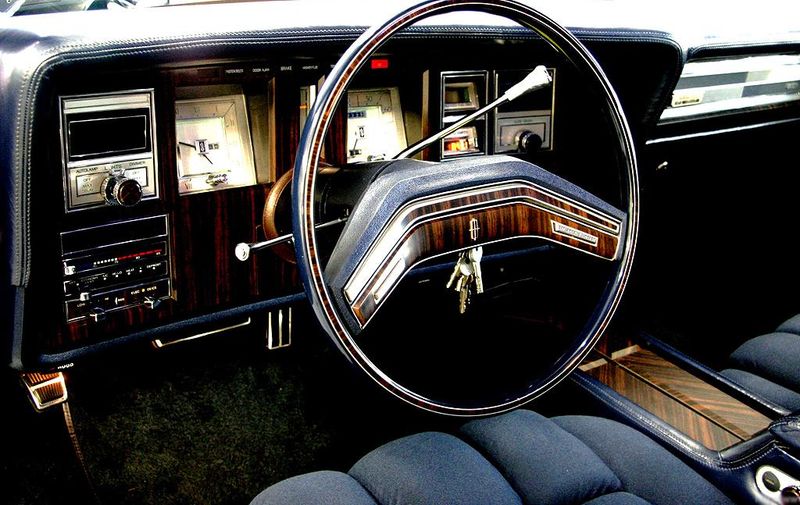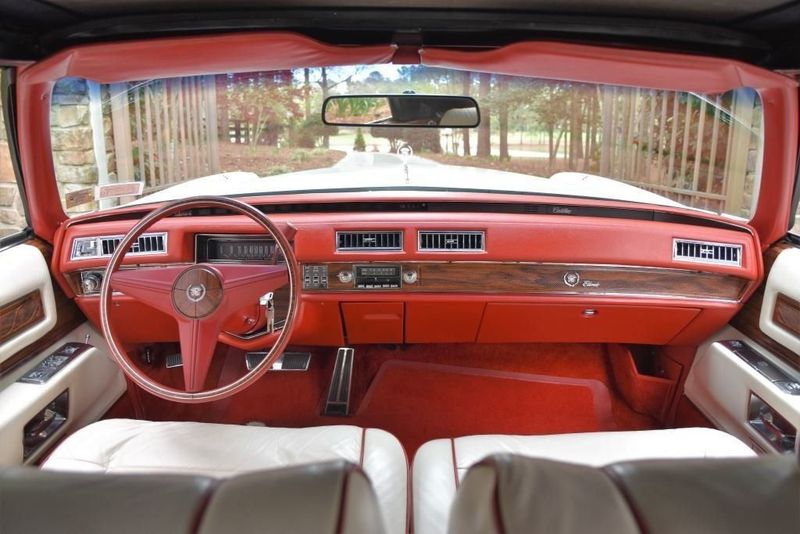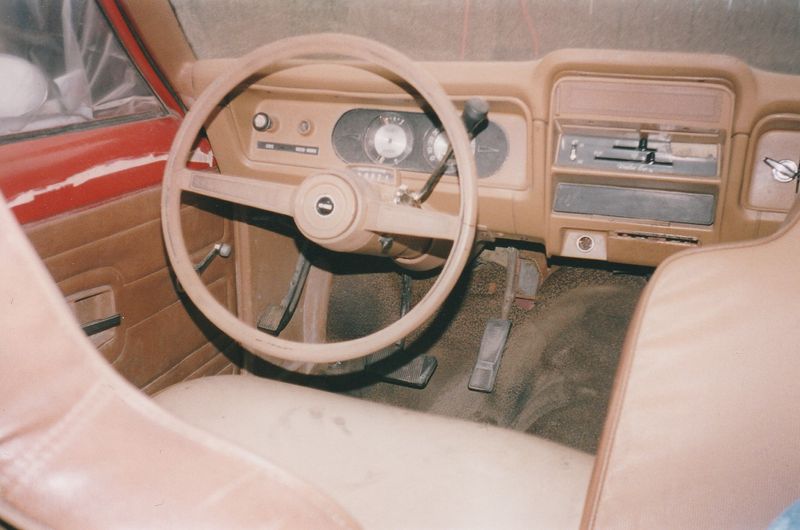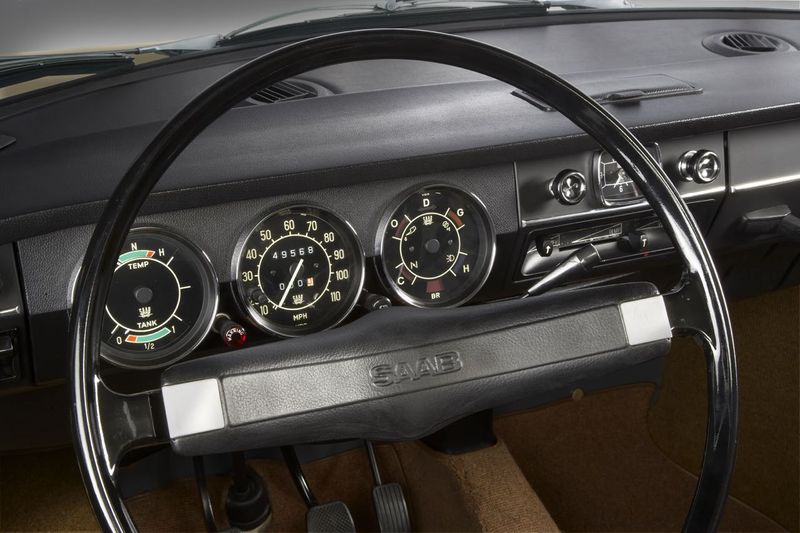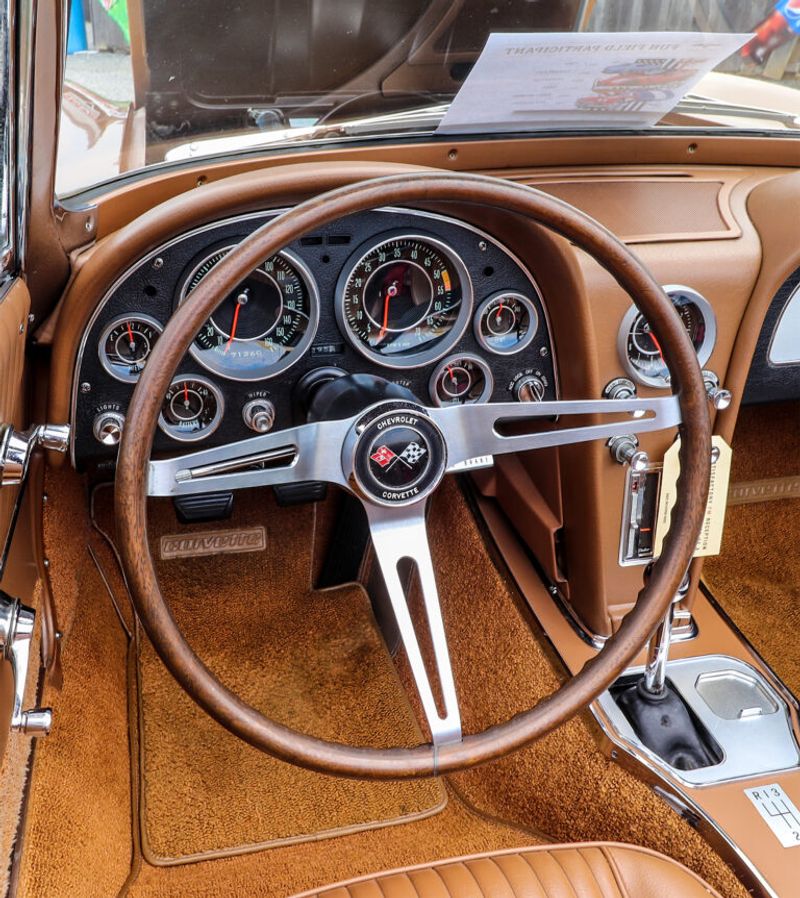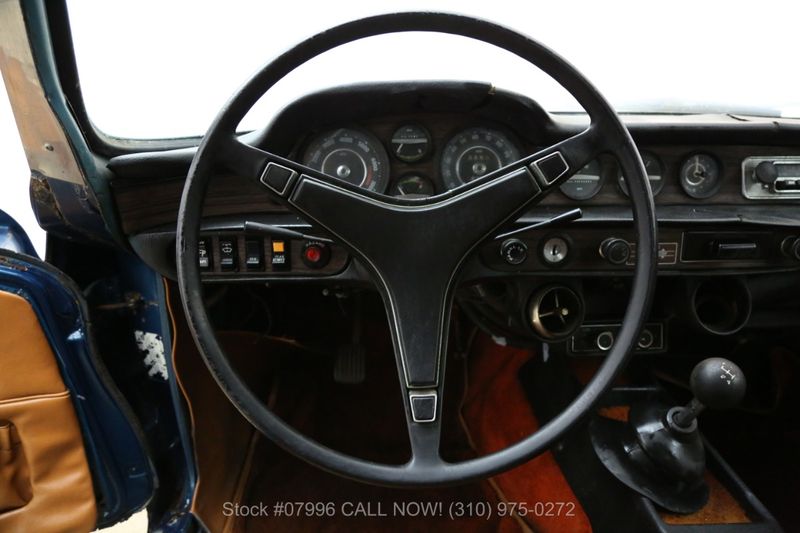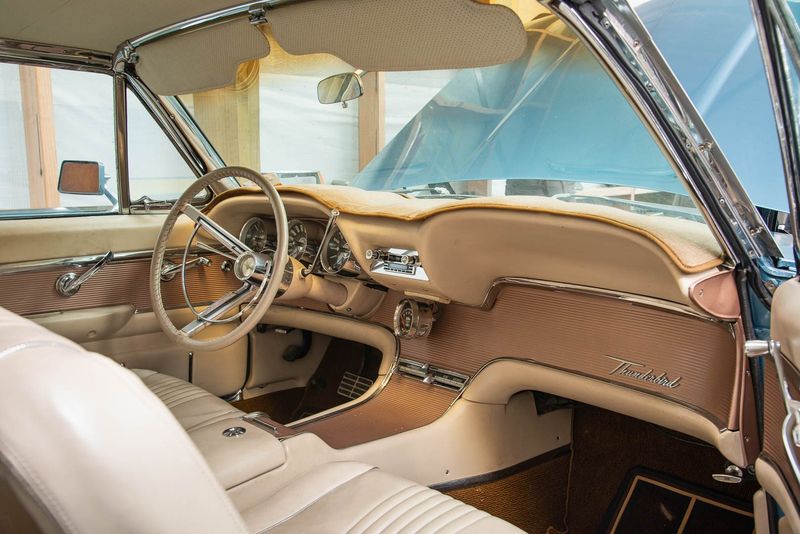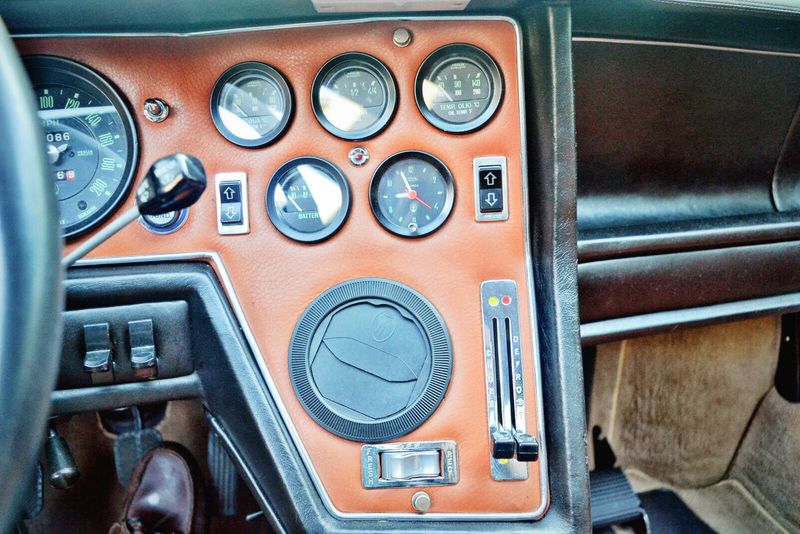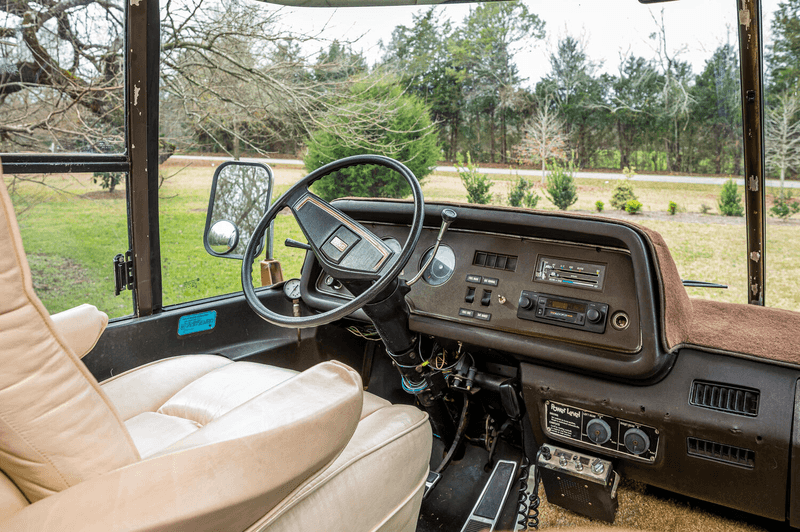The 1970s were a wild time for car design. Automakers threw caution to the wind, experimenting with dashboard layouts that ranged from futuristic to downright bizarre.
These cockpit designs often prioritized eye-catching aesthetics over actual usability, leaving drivers scratching their heads.
Take a ride with us through the most perplexing dashboards that made driving in the disco era an adventure in itself.
1. The Spaceship Console: 1971 Citroën SM
French luxury met science fiction in this oval-dialed wonder. The single-spoke steering wheel blocked crucial gauges, forcing drivers to peer around it just to check their speed. Who needs to see the road anyway?
Engineers scattered unlabeled buttons across the sloping dash like stars in an alien sky. Even simple tasks like turning on headlights became a memory game for owners. The learning curve was so steep that dealerships offered special orientation sessions.
Fun fact: The SM’s dashboard was actually designed by an aerospace engineer who apparently forgot humans would be operating it, not astronauts with specialized training.
2. Touch-Sensitive Nightmare: 1974 Aston Martin Lagonda
Nothing screamed “cutting-edge” like the Lagonda’s flat-panel display with touch-sensitive controls. Unfortunately, nothing screamed “frustration” quite like it either. The digital readouts flickered inconsistently, sometimes going completely dark at night when drivers needed them most.
Buttons required precise pressure – too light and nothing happened, too firm and you’d activate three functions at once. British weather didn’t help; the humidity-sensitive electronics often went haywire during typical London fog.
One owner famously quipped that operating the Lagonda’s dashboard was like “trying to play piano while wearing oven mitts.”
3. The Endless Horizon: 1977 Lincoln Continental Mark V
Lincoln designed the Continental’s dashboard to match America’s endless highways – stretching far and wide across the cabin. The gauges were tiny islands in a sea of faux wood and chrome, requiring drivers to lean forward and squint just to check their fuel level.
The thermometer-style speedometer was particularly baffling. Instead of a needle pointing to your speed, a red line rose up a vertical tube. Perfect for when you wanted to feel like you were monitoring a nuclear reactor rather than driving.
During night drives, the dim lighting transformed the entire dash into a shadowy cave of mystery and guesswork.
4. Climate Control Roulette: 1976 Cadillac Eldorado
Cadillac’s luxury barge featured a climate system that might as well have been labeled “surprise me.” Horizontal sliders controlled everything from temperature to fan speed, but their markings faded quickly with use.
The HVAC controls were bizarrely separated from their indicators. You’d adjust a slider on the left side of the dash, but would need to check a tiny display on the right to see what setting you’d selected.
On cold winter mornings, many Eldorado owners developed a ritual: slide everything to maximum, pray to the automotive gods, then gradually adjust based on whether you were freezing or sweating.
5. Minimalism Gone Wrong: 1972 AMC Gremlin
AMC’s budget-friendly approach to dashboard design meant the Gremlin had all the informational content of a blank notepad. The sparse gauge cluster provided only the bare minimum – speed, fuel, and temperature – with warning lights that illuminated with cryptic symbols.
One notorious light simply showed an exclamation point. Was the engine overheating? Transmission failing? Oil pressure dropping? Who knows! The manual helpfully explained it meant “something requires attention.”
Cost-cutting extended to the knobs and switches, which felt like they might snap off if turned with too much enthusiasm – a common occurrence when drivers frantically tried to defog windows.
6. The Between-Seats Mystery: 1970 Saab 99
Swedish engineering took a peculiar turn with the Saab 99. Its ignition switch wasn’t on the steering column or dashboard, but between the front seats near the handbrake. First-time drivers often sat puzzled, keys in hand, searching frantically.
The rectangular gauges looked like they belonged in different vehicles altogether. Some faced the driver, others angled toward the passenger, and a few seemed to address the rear seats.
Saab claimed the floor-mounted ignition was a safety feature, preventing knee injuries in crashes. Drivers mostly found it prevented them from starting their cars without an impromptu game of “where’s the keyhole?”
7. The Knee-High Numbers: 1975 Chevrolet Corvette C3
Corvette designers apparently believed drivers should exercise their neck muscles while checking vital car functions. The dual-pod main gauges looked cool but were just the beginning of the ergonomic adventure.
Secondary instruments – oil pressure, battery voltage, and temperature – were positioned so low on the center console they practically required drivers to take their eyes completely off the road. Imagine doing a neck crunch exercise while traveling at 70 mph just to check if your engine was overheating.
At night, the dash lit up like a sci-fi movie set, with inconsistent lighting making some gauges bright and others barely visible.
8. Swedish Puzzle Box: 1973 Volvo 1800ES
Volvo’s sporty wagon featured a dashboard that looked like it was assembled from leftover parts of other vehicles. Circular speedometer, rectangular fuel gauge, and trapezoidal warning lights created a geometric mishmash that confused the eye.
Toggle switches were scattered with seemingly no organizational logic. The headlight switch sat next to the choke, while the hazard lights hid near the radio. Drivers developed a technique of feeling around blindly while keeping their eyes on the road.
Despite Volvo’s reputation for sensible design, the 1800ES dash seemed to have been created by throwing instruments at the panel and installing them wherever they landed.
9. The Living Room Dashboard: 1978 Ford Thunderbird
Ford designed the Thunderbird’s dashboard to resemble a luxury home entertainment center rather than a car control panel. Fake woodgrain covered nearly every surface, with controls nestled in ornate surroundings like precious artifacts in a museum.
The woodgrain theme extended so completely that critical buttons blended into the background. Drivers would run their fingers along the dash, hoping to feel the defrost button during foggy mornings.
The T-Bird’s interior designers seemed more concerned with evoking a country club lounge than creating a functional driving environment. One reviewer described it as “a Lincoln Continental that swallowed a furniture store.”
10. Exotic Control Labyrinth: 1971 Maserati Bora
The Bora’s dashboard embodied Italian drama with deeply recessed instruments that disappeared into dark tunnels. Reading the speedometer was like peering into a well – you knew something was down there, but details were hard to make out.
The center console resembled an aircraft throttle quadrant, with a maze of toggles and switches that performed mysterious functions. Some controlled vital systems, others seemed connected to nothing at all.
Maserati apparently believed that supercar owners should memorize an instruction manual before attempting to adjust the heater. The Bora’s stunning exterior design was matched only by the stunning complexity of its interior controls.
11. The Kitchen-Cockpit Hybrid: 1970s GMC Motorhome
Recreational vehicle converters in the ’70s created dashboards that couldn’t decide if they belonged in a vehicle, an airplane, or a kitchen. The GMC Motorhome exemplified this confusion with an overwhelming array of controls spanning the entire front panel.
Vehicle gauges sat alongside household-style switches for water pumps and propane systems. Some luxury conversions even incorporated coffee makers and stereo equalizers directly into the dash, because apparently brewing coffee while navigating wasn’t distracting enough.
The sheer size of these panels meant drivers needed orangutan-length arms to reach controls on the far side. Many owners simply recruited passengers as “co-pilots” to handle half the switches.
